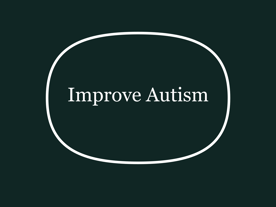Effect of vitamin A supplementation on gut microbiota in children with autism spectrum disorders - a pilot study
Authors:
Liu, J., Liu, X., Xiong, X.Q., Yang, T., Cui, T., Hou, N.L., Lai, X., Liu, S., Guo, M., Liang, X.H. and Cheng, Q.
Study Overview
The study was a 6-month pilot intervention designed to explore the effects of vitamin A (VA) supplementation on gut microbiota composition and autism-related functions in children with autism spectrum disorders (ASD). It involved 64 children with ASD, aged 1-8 years, all of whom received a single high-dose VA supplement (200,000 IU) due to baseline VA insufficiency. A subset of 20 children was further analyzed for changes in gut microbiota using 16S rRNA gene sequencing.
Key Findings
Vitamin A Levels
Pre-Intervention: All 64 participants had insufficient VA levels (either marginal VA deficiency [MVAD] or VA deficiency [VAD]), with plasma retinol averaging 0.59 ± 0.19 µmol/L in the full group and 0.49 ± 0.13 µmol/L in the subset.
Post-Intervention: After 6 months, plasma retinol levels significantly increased to 0.72 ± 0.20 µmol/L in the full group and 0.78 ± 0.20 µmol/L in the subset (p < 0.001 for both). However, many children still exhibited MVAD (48.4%) or VAD (48.4%), indicating that a single dose was insufficient to fully correct VA status in all participants.
Autism Biomarkers
CD38 and RORA mRNA Levels: Significant increases were observed in the mRNA expression of CD38 and RORA (p < 0.05), which are biochemical markers linked to social behavior and transcriptional regulation in ASD. These changes suggest that VA supplementation may influence autism-related biological pathways.
Autism Symptoms
Behavioral Scales: No significant changes were detected in autism symptoms, as assessed by the Autism Behavior Checklist (ABC), Childhood Autism Rating Scale (CARS), and Social Responsiveness Scale (SRS) (all p > 0.05). This indicates that while VA affected biomarkers, it did not lead to measurable improvements in behavioral symptoms over the 6-month period.
Gut Microbiota Changes (Subset of 20 Children)
Bacteroidetes/Bacteroidales: The proportion of Bacteroidetes (at the phylum level) and Bacteroidales (at the order level) significantly increased post-intervention (from 43.2% to 62.9% for Bacteroidetes; all FDR q < 0.05). At the genus level, Prevotella and Bacteroides also increased (20.8% to 40.0% and 16.6% to 18.2%, respectively).
Bifidobacterium: The proportion of Bifidobacterium significantly decreased (from 2.0% to 0.2%; FDR q < 0.05), along with related taxonomic levels (Bifidobacteriaceae and Bifidobacteriales).
Bacteroidetes/Firmicutes Ratio: The ratio increased from 1.0 to 2.0, driven by a rise in Bacteroidetes and a decline in Firmicutes (from 43.5% to 31.2%).
Other Changes: Decreases were noted in Proteobacteria (10.1% to 4.5%), Actinobacteria (2.8% to 0.5%), and specific genera like Escherichia-Shigella and Clostridium.
Diversity and Richness: No significant differences were found in alpha diversity indices (e.g., Shannon, Simpson, ACE, Chao) between pre- and post-intervention samples, indicating that overall microbial diversity remained stable despite compositional shifts.
Additional Observations
Mealtime Behaviors and Diet: In the subset, no significant changes occurred in picky eating, resistance to new foods, or food intake frequencies (except for a non-significant increase in stem and leafy vegetable consumption, FDR q = 0.552), suggesting that dietary factors did not confound the microbiota findings.
Limitations
Persistent VA Deficiency: Many children remained VA-deficient after 6 months, suggesting a need for additional supplementation, which was not feasible due to logistical challenges (e.g., participant dropout, parental reluctance).
Sample Size: The gut microbiota analysis was limited to 20 children, reducing the statistical power and generalizability of these findings.
Lack of Placebo: All participants received VA due to baseline deficiency, precluding a control group for comparison.
Conclusions
VA supplementation significantly increased plasma retinol levels and altered autism-related biomarkers (CD38 and RORA mRNA), but it did not improve autism symptoms within 6 months.
In the gut microbiota, VA promoted a shift toward higher Bacteroidetes/Bacteroidales and lower Bifidobacterium proportions, suggesting a role in modulating microbial composition. Bacteroidetes emerged as a key taxon potentially influenced by VA.
The findings hint at a possible beneficial effect of VA on biological markers and gut microbiota in ASD, but the lack of symptom improvement and small sample size warrant further research to clarify these relationships and their clinical significance.
This pilot study provides initial evidence of VA's effects on gut microbiota and autism biomarkers, setting the stage for larger, controlled trials to explore its therapeutic potential in ASD.
https://pubmed.ncbi.nlm.nih.gov/28938872/
doi: 10.1186/s12866-017-1096-1


